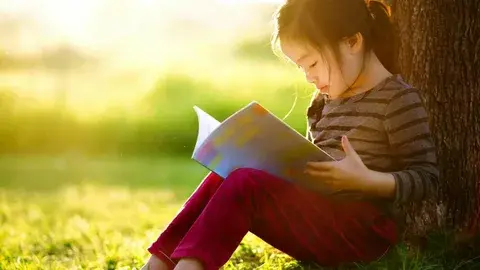Let’s get real here—finding a beautiful children’s book isn’t just about picking something pretty. We want books that captivate, teach, and, most importantly, spark joy for the kids. But with the overwhelming amount of children’s literature out there, how do you choose the best ones? And what exactly makes a children’s book beautiful? Spoiler alert: It’s not just the illustrations.
In this guide, we’ll break down what goes into finding a genuinely beautiful children’s book—something that’ll not only capture your child’s attention but also nurture their love for reading. Whether you’re a parent, a teacher, or a gift-giver, let’s get to the heart of what makes a children’s book worth holding onto for years.
What Makes a Children’s Book Beautiful?
A beautiful children’s book is more than eye-catching pictures. Sure, illustrations play a big part, but a book truly stands out when it has:
- Engaging, age-appropriate storytelling: Kids connect with books when the story speaks to them, whether it’s about adventure, empathy, or self-discovery.
- Illustrations that inspire imagination: Vibrant, well-drawn illustrations help kids visualize the story, which makes reading more immersive.
- Messages that matter: The best children’s books don’t preach; they subtly teach. These books help kids understand kindness, courage, or acceptance.
- A balance between fun and learning: Kids won’t love a book if it’s pure instruction. The best ones sneak in life lessons amid a good story.
When a book ticks all these boxes, it’s no longer just a book—it’s an experience. And for children, that experience can make all the difference in fostering a lifelong love of reading.
Why Finding the Right Book Matters for Kids
Think about it: Our brains develop most rapidly in childhood. What kids read can shape their emotions, creativity, and even their social skills. But finding a beautiful children’s book that makes that kind of impact? That’s easier said than done. Kids, especially younger ones, have a limited attention span. You need a book that can hold their focus, spark curiosity, and make them want to turn each page.
Here’s why the right book matters:
- Boosts language development: Books expand kids’ vocabulary and comprehension skills.
- Teaches empathy and understanding: Through stories, children learn to walk in others’ shoes.
- Builds stronger parent-child bonds: Reading together is quality time, building trust and intimacy.
- Encourages creativity and imagination: A great story opens doors to worlds they’ve never imagined.
Simply put, the right children’s book isn’t just an investment in a few minutes of peace—it’s an investment in their growth.
Key Elements to Look for in a Beautiful Children’s Book
When picking out a children’s book, it can be tempting to grab something that just looks “nice.” But we want something with substance too, right? Here are the top things to look for:
1. Compelling Storyline
Kids love a good story—whether it’s about dragons, a day at the beach, or making friends. A compelling storyline isn’t just entertaining; it’s also age-appropriate. Beautiful children’s books often reflect situations or emotions kids can relate to, making the story feel personal.
2. Memorable Illustrations
For children, pictures are everything. Great illustrations aren’t just “nice to have”—they’re essential. Look for books with colors and imagery that pop off the page and bring the story to life. These visuals often tell parts of the story that the words leave unsaid.
3. Simple but Impactful Messages
Kids’ books should have a message, but it needs to be subtle. Books that lean too heavily on lessons can feel more like lectures than stories. Look for books that weave in messages of kindness, resilience, or friendship in a way that feels natural.
4. Rhythmic and Rhyme Schemes
Especially for younger children, a good rhythm or rhyme can be a game-changer. It makes the story fun to read aloud and easier for kids to follow. Think of books like Dr. Seuss classics—they’re memorable because of their rhythm and rhyme.
The Importance of Diverse Representation in Children’s Books
We’ve come a long way, but diversity in children’s literature is still something to pay attention to. When kids see characters that look like them or share similar experiences, they feel seen. It’s just as valuable for them to encounter characters from different backgrounds. A truly beautiful children’s book isn’t just a great story; it’s an inclusive one.
Representation in children’s literature can:
- Help kids understand different cultures and experiences
- Foster empathy and open-mindedness
- Reflect children’s own experiences back to them, boosting self-confidence
A Few Examples of Beautiful Children’s Books That Hit the Mark
If you’re wondering what kinds of books fit the “beautiful” category, here’s a shortlist of crowd favorites. Each of these books has the magic combination of story, art, and heart that makes it unforgettable.
- “Where the Wild Things Are” by Maurice Sendak
A story about adventure and imagination, this book combines stunning illustrations with a timeless story about facing fears. - “Last Stop on Market Street” by Matt de la Peña
This beautifully illustrated book celebrates diversity and teaches kids to find beauty in all people and places. - “The Very Hungry Caterpillar” by Eric Carle
This classic is as visually captivating as it is educational, teaching kids about metamorphosis in a way that’s fun and engaging. - “Goodnight Moon” by Margaret Wise Brown
A soothing bedtime story with simple illustrations and rhythm, perfect for young readers.
These books are not only beautiful children’s books, but they’re also timeless reads that stay relevant for generations.
Tips for Reading to Your Child
Want to get the most out of storytime? Here are a few tips to make reading an enjoyable experience:
- Get expressive: Use different voices, tones, and volumes. Kids love it, and it keeps them engaged.
- Ask questions: Pause to ask your child what they think will happen next. It boosts their comprehension.
- Relate the story to their life: If the character is dealing with a new sibling, for example, talk about how they might feel in that situation.
FAQs on Beautiful Children’s Books
Q: How do I find age-appropriate books?
A: Look at the age recommendation on the cover, but also consider the story’s complexity and themes. Some books meant for younger kids might still work well for slightly older ones, especially if they’re captivating.
Q: Should I choose books with specific themes for teaching life lessons?
A: Yes, but keep it subtle. Kids connect best with themes that feel natural, like kindness, curiosity, or bravery woven into the storyline rather than highlighted.
Q: Do kids need books with diverse characters?
A: Absolutely. Seeing different types of characters helps kids build empathy and gives them a more inclusive view of the world.
Q: What’s the benefit of reading the same book multiple times?
A: Familiarity boosts comprehension and confidence. Plus, repeated reading is comforting to kids, like revisiting a beloved friend.
Q: Is it okay to use picture books with older kids?
A: Definitely! Picture books can help with visual storytelling, critical thinking, and creativity. They’re great for all ages.
Final Thoughts on Choosing a Beautiful Children’s Book
Finding a beautiful children’s book is all about combining visual appeal with a great story and subtle lessons. Kids deserve stories that excite them, characters they can connect with, and illustrations that inspire. A well-chosen book isn’t just entertainment—it’s an opportunity to bond, teach, and spark a love for reading that can last a lifetime. So next time you’re looking for a children’s book, aim for beauty that goes beyond the page.
Read More: SkinCareSensation

